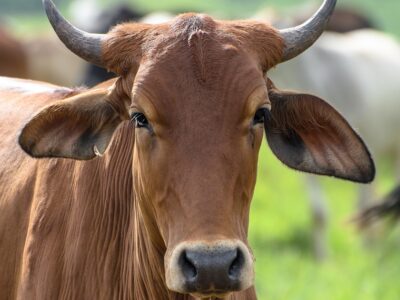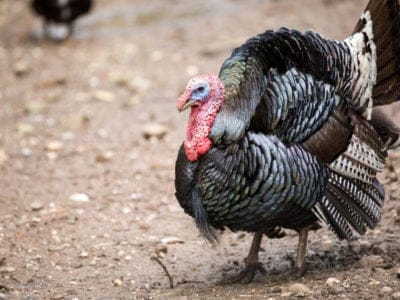Below you can find a complete list of Jamaican animals. We currently track 202 animals in Jamaica and are adding more every day!
Many areas of Jamaica are a wonderland of rich flora and fauna. Most visitors that travel to the island are looking for beaches and culture. Many leave impressed by the native wildlife. There are insects, lizards, snakes, crabs and so much more.
Jamaica is a world of diverse animals and a natural paradise.
The Official National Animal of Jamaica
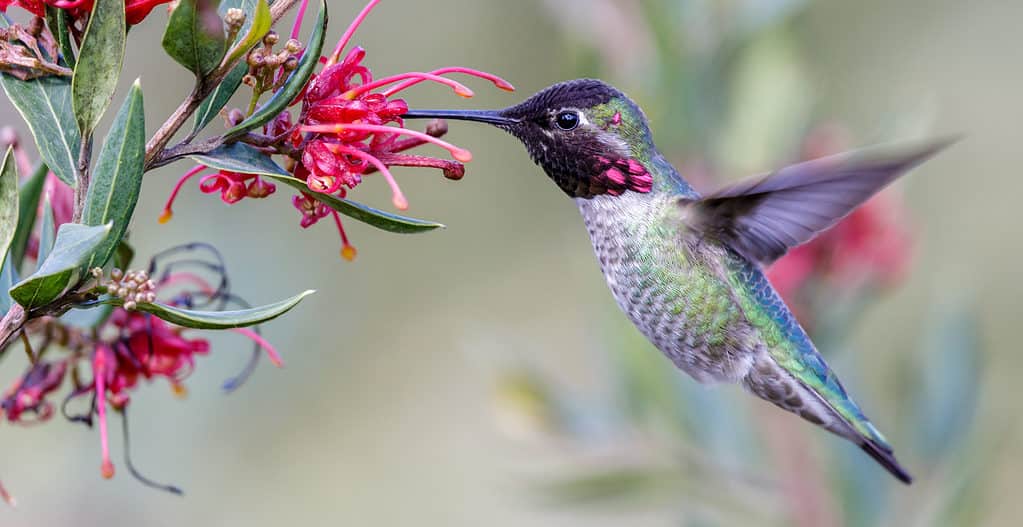
The red-billed streamertail is the national bird of Jamaica.
©yhelfman/Shutterstock.com
The red-billed streamertail is the national bird of Jamaica. A member of the hummingbird family, the streamertail is also known as the scissor-tail or doctor bird.
This is a beautiful, multi-colored creature found among flowering plants in closed forests. It’s noted for a long, curved, slender beak. The mature males have two tails that stream as they fly.
People on the island use the bird’s feathers as decorations during traditional events. Besides being Jamaica’s national bird, the red-billed streamertail is also found in Africa, America, Europe, and Canada.
Where To Find The Top Wildlife
Jamaica is the land of wood and water, a natural wonder of rolling green hills and stunning views. Animal lovers look to see the most wonderful native creatures, many unique to the island.
Manatee
The manatee likes coastal waters that are shallow and brackish. The gentle creatures are also called sea cows. You can spot them in their habitats along Jamaica’s southwest coast.
The manatee is infrequently spied on in the north too. The native animals surface often because they breathe air. Posing no risk to humans and being vegetarians, you can actually swim with the manatee.
Patoo
The patoo is an elegant bird. The species here include the Jamaican owl and the barn owl. Sadly, the populace has a fear of owls and tends to harm them on sight.
The barn owl is an amazing sight. Under a bright moon, it’s seen perched on posts or trees in Kingston. The light gives the white-colored owl a Halloween-ish glow.
Also known as the potoo, this owl is endemic to Jamaica. You’ll find it commonly on the east side of the island in the mountains.
Giant Swallowtail
This native butterfly is exclusive to Jamaica. It’s a sight to see. The swallowtail has a wingspan of six inches. It has a vivid gold and black color with the lower wings decorated with blue circles. You’ll find the giant swallowtail in the John Crow and the Blue Mountains and in Cockpit Country.
Sea Turtle
The endangered sea turtle has found protection at the fish sanctuary in Oracabessa Bay. The turtle crawls ashore at Ocho Rios, digs a hole, and lays its eggs. Hotels like the Jamacia Inn on the north coast provide safe venues for spying on these native animals.
Crocodiles
A small population of American crocodiles inhabits the south coast, concentrated near the Black River with other crocs near Hellshire. Conservationists strive to protect the species. Some tours take visitors out to Treasure Beach and Black River to see the animals.
Mongoose
The mongoose was deliberately brought to Jamaica to battle the rat population hurting the sugar plantations.
An obsessive hunter, the native animal didn’t just decimate the rodent populace. It also tore into ground birds as well as indigenous lizards and snakes.
Today, the mongoose is as much a pest as the rat. You’ll spot one almost anywhere on the island, especially along urban roads. The native animal’s identifiable by its black-tipped feet, tail, and gray fur.
The Most Dangerous Animals
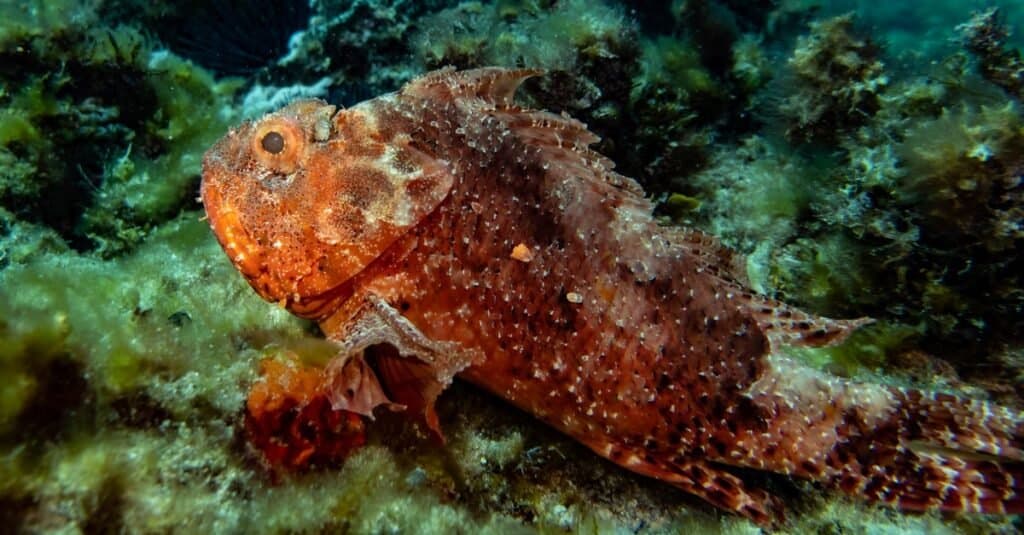
Venomous Scorpionfish at Rottnest island Western Australia. Scorpionfish have exceptional camouflage abilities and are known to be some of the most poisonous fishes in the world.
©Ian Geraint Jones/Shutterstock.com
For all the beauty and serenity you find among Jamaica’s native wildlife, there are quite a few creatures you want to stay away from. Here are a few.
Scorpion Fish
It can fit in the palm of your hand. It’s a lovely creature, but the scorpion fish uses its spiky fins to emit a tremendously venomous poison. These same fins are capable of slashing deep lacerations.
Forty Leg
If you go into the verdant and lush Jamaican jungles — especially after a rainfall — you might come across a forty leg. The forty leg is an amazing thing to see slinking with its dozens of legs. But its bite, not always fatal, leads to searing pain, spasms, and a visit to the emergency room.
Brown Recluse

Even though it has extremely dangerous venom, the brown recluse actually has incredibly small fangs compared to most spiders.
©Physics_joe/Shutterstock.com
Many of the thousands of species of spiders in Jamaica are harmless. The brown recluse is not on that list. Their pincers inject hemotoxin venom into the bloodstream. It can take weeks for its sting to lead to pimples, swelling, lesions, and even sepsis.
Pit Bulls
The pit bull may be a domesticated pet, but it has a rep for being a dangerous animal. Owners have to keep the animal secured. Passersby know to take precautions whenever approaching areas where these dogs live.
Endangered Animals
Jamaica is home to a rich diversity of flora and fauna, but many of the island’s unique animal species are currently facing the threat of extinction. Jamaica’s tropical climate and varied terrain create a habitat that is ideal for a wide range of animals, but human activities like deforestation, pollution, and urbanization have had a negative impact on many of the island’s native species. In this article section, we will look at some of the endangered animals in Jamaica.
The Jamaican Iguana, also known as the Blue Iguana, is one of the most critically endangered animals in Jamaica. It is a large, herbivorous lizard that is found only in the dry forests of Jamaica. Habitat loss, hunting, and invasive species like mongooses and rats have all contributed to the decline of the Jamaican Iguana, and today there are only a few hundred individuals left in the wild.
Unfortunately, it’s impossible to go anywhere and not find some native species at risk of extinction. There can be a myriad of reasons but more often than not it boils down to humankind and urban advancement. Here are a few Jamaican species on endangered lists.
- Jamaican Iguana
- American Crocodile
- Yellow Snake
- Skink
- Jamaican Boa
Native Birds
Jamaica is a birdwatcher’s paradise. Of the 326 species of birds native to Jamaica, 28 species can be found nowhere else in the world. The best time for bird watching in Jamaica is during the dry season, from December to June.
Some of the best locations for bird watching in Jamaica are the Blue Mountains, John Crow Mountains, Cockpit Country Forest Reserve, Rio Grande Valley, and Royal Palm Reserve.
A few types of birds found throughout the country:
- Black-billed Amazon: The smallest species of Amazona parrot. It is listed as vulnerable due to habitat loss and poaching. It inhabits the mountainous rainforests of Jamaica, especially limestone rainforests.
- Yellow-shouldered Grassquit: Common in wooded areas across Jamaica.
- Jamaican Owl: These nocturnal birds can be seen in a variety of habitats throughout Jamaica. They are one of only two owl species in the country.
- Chestnut-bellied Cuckoo: Found in wet, open forests.
Jamaican Fish

You’ll find many types of freshwater and marine fish on and around the island of Jamaica.
©I Wei Huang/Shutterstock.com
You’ll find many types of freshwater and marine fish on and around the island. Some of the best areas for deep-sea fishing in Jamaica are Montego Bay, Port Antonio, Cayman trench, and Pedro Bank. A selection of marine fish commonly caught in these locations includes yellowfin tuna, white marlin, barracuda, mahi-mahi, and wahoo.
For snorkeling, you’ll find some of the best destinations are Montego Bay, Negril, Ocho Rios, and Runaway Bay. You can enjoy marine life such as stingrays, sea urchins, jellyfish, and a large variety of colorful reef fish.
While the marine fish tend to steal the show, you can also find around 40 species of freshwater fish on the island. The only endemic species include the Jamaican killifish, black belly limia, striped gambusia, and Wray’s gambusia.
The Rarest Animals in Jamaica
Jamaica is home to a rich and diverse array of animal species, but many of these species are now endangered or threatened due to habitat loss, hunting, and other human activities.
Here are a few animals that are critically endangered and at risk of extinction:
- The Jamaican Iguana, also known as the Blue Iguana, is one of the rarest animals in Jamaica and is also one of the most critically endangered reptiles in the world. The Blue Iguana is a large, herbivorous lizard that is found only in the dry forests of Jamaica and is threatened by habitat loss, hunting, and the introduction of invasive species.
- The Jamaican Yellow Boa, also known as the Jamaican Boa, is a non-venomous snake that is found only in Jamaica. The Yellow Boa is threatened by habitat loss and hunting and is now listed as endangered. Conservation efforts are underway to help protect and increase the population of the Jamaican Yellow Boa.
- The Jamaican Galliwasp, also known as the Jamaican Mabuya, is a large, herbivorous lizard that is found only in Jamaica. The Jamaican Galliwasp is threatened by habitat loss and hunting and is now listed as endangered. Conservation efforts are underway to help protect and increase the population of the Jamaican Galliwasp.
Finally, Jamaica is home to a number of rare and endangered animal species, many of which are now threatened with extinction due to human activities.
The Largest Animals in Jamaica
Jamaica is home to a diverse array of animal species, including some that are quite large in size.
In this section, we will take a look at some of the largest animals in Jamaica, from land mammals to marine creatures.
- The Jamaican Boa, also known as the Yellow Boa, is the largest snake in Jamaica.
- The Jamaican Iguana, also known as the Blue Iguana, is one of the largest lizards in Jamaica, with some individuals growing up to 5 feet long.
- The Jamaican Hutia, also known as the Jamaican Patoo, is the largest land mammal in Jamaica, with some individuals weighing up to 11 pounds.
- The American Crocodile is one of the largest reptiles in Jamaica, with some individuals growing up to 13 feet long.
- The Humpback Whale is one of the largest marine mammals in Jamaica, with some individuals growing up to 50 feet long.
- The Giant Swallowtail Butterfly is the largest butterfly in Jamaica, with a wingspan of up to 6 inches.
Finally, Jamaica is home to a number of large and impressive animal species, from snakes and lizards to mammals and marine creatures.
Jamaican Snakes

The smallest and most common snake in Jamaica. Blind snakes resemble earthworms and spend most of their time underground.
©Ken Griffiths/Shutterstock.com
Jamaica does not have a high diversity of snakes. None of the species found on the island are venomous. Many of the snakes in Jamaica are threatened by habitat destruction, invasive species (like mongoose), and illegal poaching.
Snakes you can see in Jamaica:
- Jamaican Boa/Yellow Snake: The largest snake in Jamaica. The Jamaican boa is nocturnal and mainly arboreal.
- Blind Snake: The smallest and most common snake in Jamaica. Blind snakes resemble earthworms and spend most of their time underground.
- Jamaican Dwarf Boa: There are several species of dwarf boa on the island, also called “Thunder Snakes”. These terrestrial snakes live in a variety of habitats.
- Grass Snake: Sometimes called the water snake or garden snake, grass snakes are good swimmers and live near sources of freshwater.
- Groundsnake: There are several species of ground snake in Jamaica, also called racers. The black racer is listed as critically endangered.
- Eyespot Boa: Similar to dwarf boas, but are a bright orange color. These snakes are rarely seen.
- Portland Ridge Dwarf Boa: These snakes are listed as critically endangered and are difficult to find. They are thought to only live in the Portland Ridge area of the island in dry rocky areas and caves.
The Flag of Jamaica
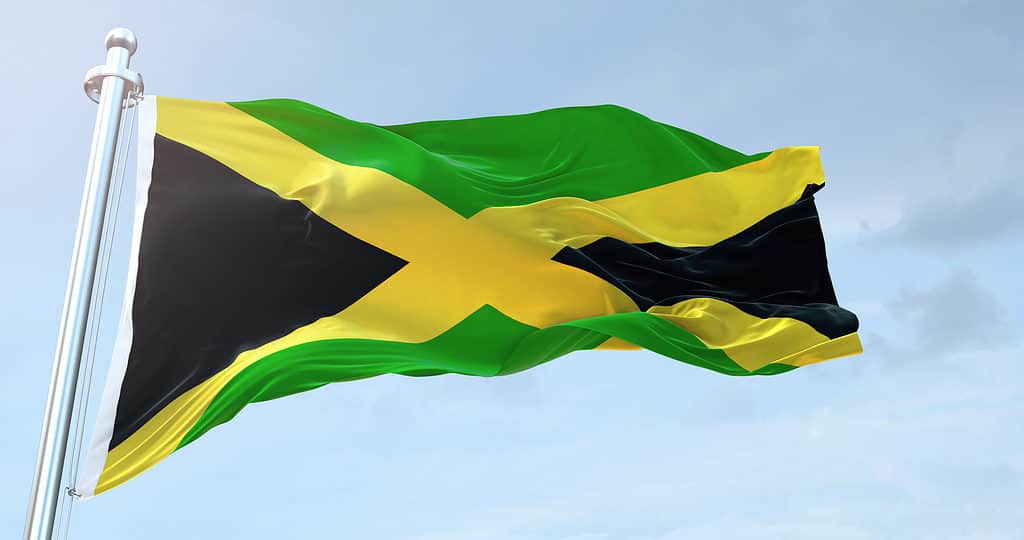
Flag of Jamaica waving in the wind.
©iStock.com/EA
The flag of Jamaica is a bold and vibrant symbol of the island nation’s history and culture. The flag features a striking combination of black, green, and gold, with the black triangle on the left side of the flag representing the hardships faced by the Jamaican people, the green representing the lush vegetation of the island, and the gold representing the natural wealth and beauty of the land.
The flag was first introduced in 1962 when Jamaica gained independence from the United Kingdom. The design of the flag was created by a committee of Jamaican citizens, who wanted to create a flag that would symbolize the country’s history and its aspirations for the future.
The black triangle on the flag is meant to represent the hardships faced by the Jamaican people throughout their history, including slavery, colonialism, and oppression. The green represents the lush vegetation that covers the island, while the gold represents the natural wealth and beauty of the land, including the island’s sunshine, beaches, and other natural resources.
The flag of Jamaica symbolizes the country’s independence and represents its identity. The green color in its flag symbolizes hope as well as Jamaica’s agricultural resources. The color black depicts the strength and creativity of its people and gold represents the sun’s natural beauty and Jamaica’s wealth.
Vegetables Native to Jamaica
Ever heard of Acra? Or perhaps of the spicy Scotch Bonnet Peppers found in many delicious Caribbean meals? Jamaica has a host of amazing vegetables indigenous to its land.
Jamaican Animals

Admiral Butterfly
Stunningly beautiful wings

Amazon Parrot
These parrots can be trained to be "talking birds" that mimic human speech
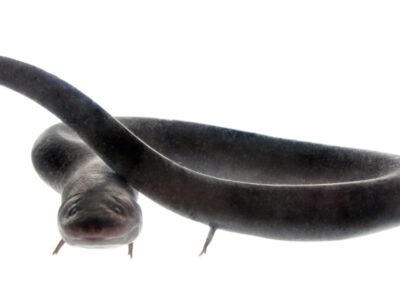
American Eel
Don't eat raw eel! Their blood is poisonous to humans when consumed raw.
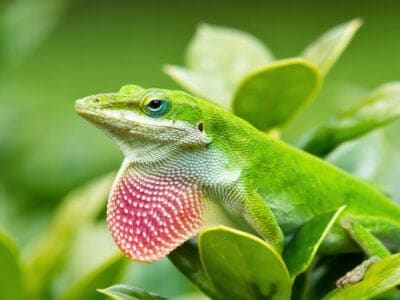
Anole Lizard
There are just under 400 species, several of which change color.

Ant
First evolved 100 million years ago!
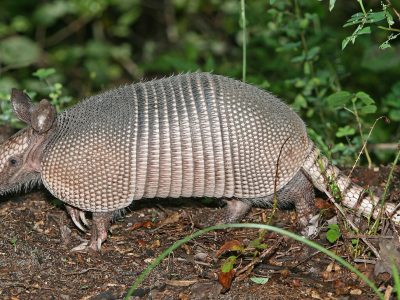
Armadillo
Can curl into a hard, protective ball!

Armyworm
They are so named because they "march" in armies of worms from one crop to another in search of food

Barn Owl
Found everywhere around the world!

Barn Swallow
Older offspring help care for new hatchlings.

Bat
Detects prey using echolocation!

Bear
There are 8 different species!

Bed Bugs
Bed bugs feed for 4-12 minutes.

Bee
Rock paintings of bees date back 15,000 years

Beetle
There are more than 350,000 different species

Bird
Not all birds are able to fly!

Biscuit Beetle
The biscuit beetle form a symbiotic relationship with yeast

Black Widow Spider
They typically prey on insects!

Blue Dragon Sea Slug
They inflict a painful, venomous sting
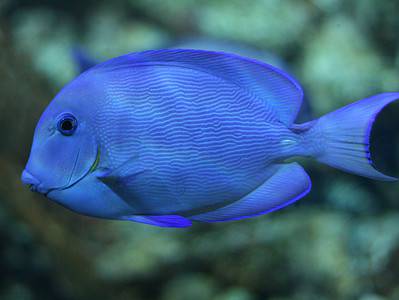
Blue Tang
One of the most colorful members of the genus Acanthurus

Booby
Seabirds found across the South Pacific!

Brazilian Treehopper
“Mild-Mannered Minimonsters”

Brown Dog Tick
Can live its entire life indoors

Burrowing Owl
The burrowing owl lives in underground burrows

Butterfly
There are thought to be up 17,500 species!

Caecilian
Some species' babies use their hooked or scraper-like teeth to peel off and eat their mother's skin

Camel Cricket
The camel crickets that are found in the USA are light brown in color. They also have dark streaks all over their body.

Cat
May have been domesticated up to 10,000 years ago.

Caterpillar
The larvae of a moth or butterfly!

Catfish
There are nearly 3,000 different species!

Cedar Waxwing
Their feathers have red, waxy tips that can be hard to identify unless you’re up close.

Centipede
There are about 3,000 documented species!
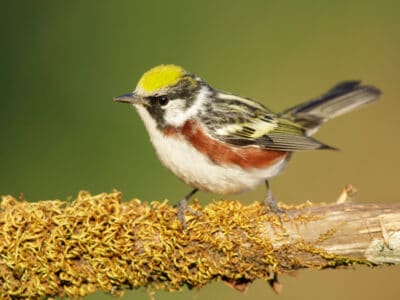
Chestnut-Sided Warbler
They inhabit regrowing forests

Chicken
First domesticated more than 10,000 years ago!

Cockroach
Dated to be around 300 million years old!

Codling Moth
Pupae are able to undergo diapause to survive poor fruit yield years and winter.
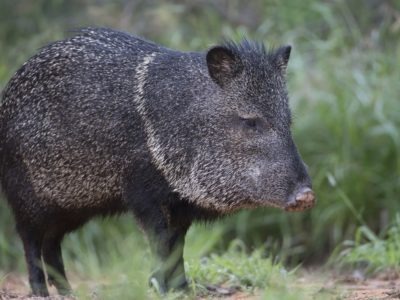
Collared Peccary
Form bands of up to 12 individuals!

Common Furniture Beetle
The common furniture beetle feeds exclusively on wood

Common House Spider
House spiders have the ability to eat most insects in a home.

Common Yellowthroat
The Common Yellowthroat stays close to the ground and uses stealth to survive!

Cormorant
They can fly 35 mph and dive 150 feet below water.

Cow
There are nearly 1.5 billion worldwide!

Crab
There are 93 different crab groups

Crab Spider
Crab Spiders can mimic ants or bird droppings

Cricket
Male crickets can produce sounds by rubbing their wings together

Crocodile
Have changed little in 200 million years!

Crocodylomorph
Crocodylomorphs include extinct ancient species as well as 26 living species today.

Crow
A group of these birds is called a Murder.

Dog
First domesticated in South-East Asia!

Dog Tick
Dog ticks feed on dogs and other mammals

Donkey
First domesticated 5,000 years ago!

Dragonfly
It's larvae are carnivorous!
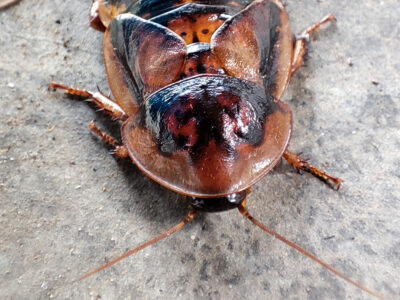
Dubia Cockroach
The most popular species of feeder roach

Duck
Rows of tiny plates line their teeth!

Dung Beetle
The dung beetle can push objects many times its own weight
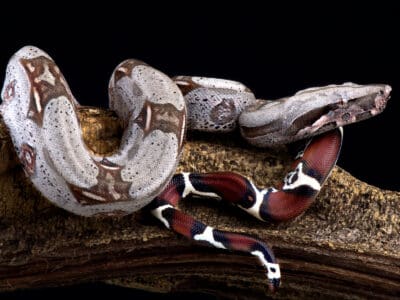
Dwarf Boa
Some species can change color from dark to light, and back again.

Earthworm
They are hermaphrodites, which means they have male and female organs

Earwig
There are nearly 2,000 different species!

Eel
Eels can be a mere few inches long to 13 feet!

False Widow Spider
False spiders actually prey on black widow spiders and other hazardous spiders
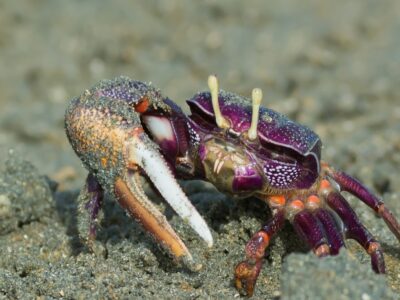
Fiddler Crab
The fiddler crab gets its name from the motion the males make with their over-sized claw during the mating ritual.

Firefly
The firefly produces some of the most efficient light in the world
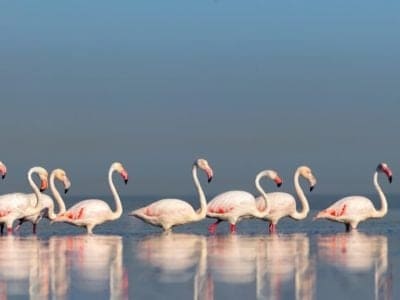
Flamingo
Sleeps on just one leg!

Flea
Adult fleas can jump up to 7 inches in the air

Fly
There are more than 240,000 different species!

Flying Squirrel
Can glide up to 90 meters!

Frog
There are around 7,000 different species!

Fruit Fly
Fruit flies are among the most common research animals in the world
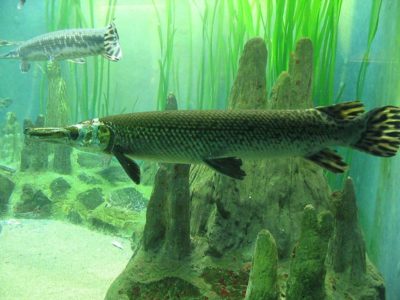
Gar
Can grow to more than 3m long!

Gecko
There are thought to be over 2,000 species!

German Cockroach
The most common type of urban roach

Glowworm
Found inhabiting dense woodland and caves!

Gnat
Males form large mating swarms at dusk

Grasshopper
There are 11,000 known species!
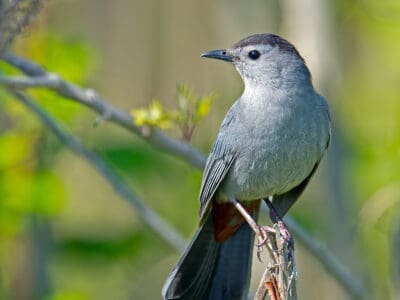
Gray Catbird
Their songs have cat-like qualities and can mimic other birds and animals, like tree frogs.
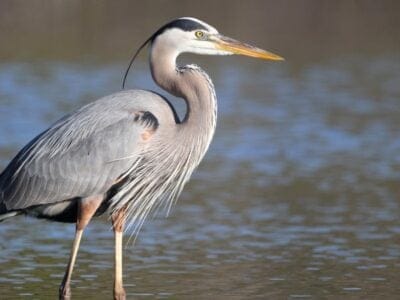
Great Blue Heron
Their wingspan is larger than an eagle’s; both males and females help hatch the eggs; rich in symbolism
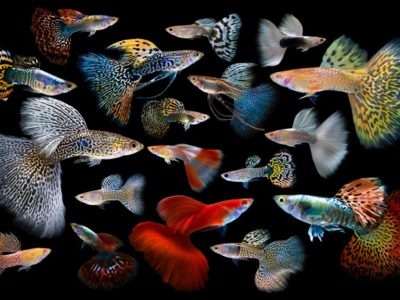
Guppy
Also known as the Millionfish!

Hamster
Able to run as quickly backwards as forwards!

Hare
Can reach speeds of over 50 mph!
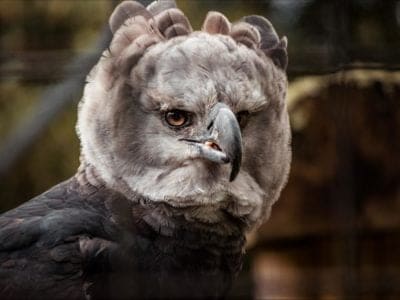
Harpy Eagle
Talon's the size of a grizzly bear's claws!

Harris’s Hawk
Their vision is eight times better than a human's

Hawk Moth Caterpillar
Many hawk moth caterpillars eat toxins from plants, but don’t sequester them the way milkweed butterflies do. Most toxins are excreted.

Hercules Beetle
This dynastine scarab beetle makes a weird huffing sound when it’s disturbed.

Honey Bee
There are only 8 recognized species!

Horse
Has evolved over 50 million years!

Horsefly
Horseflies have been seen performing Immelmann turns, much like fighter jets.

Housefly
The fly has no teeth

Human
Thought to have orignated 200,000 years ago!

Hummingbird
Beat their wings up to 80 times per second!

Huntsman Spider
Some huntsman spiders have an interesting way of moving around. Some cartwheel while others do handsprings or backflips.

Ibis
Found in swamps, marshes and wetlands!
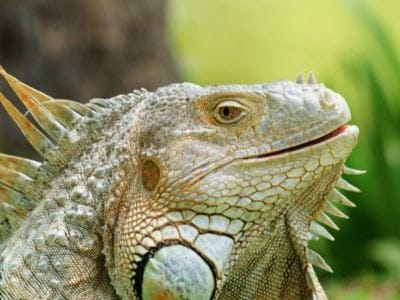
Iguana
Uses visual signals to communicate!

Insects
There are an estimated 30 million species!

Jacana
The jacana has the ability to swim underwater

Jack Crevalle
One of the biggest species in the Caranx genus
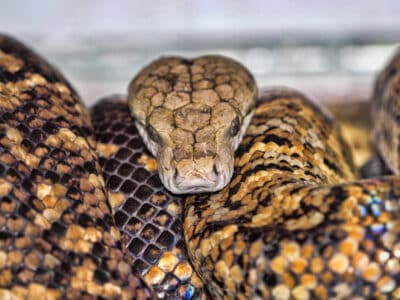
Jamaican Boa
When a Jamaican boa is coiled up, it almost looks like two snakes together because of color pattern.
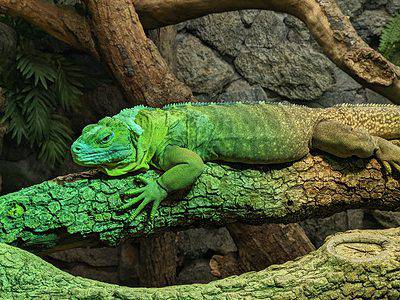
Jamaican Iguana
Almost went extinct for 40 years

Jumping Spider
Some can jump 50 times the length of their bodies

Kentucky Warbler
The Kentucky Warbler appears to wear bright yellow cat-eye glasses!

Kingfisher
Inhabits wetlands and woodlands worldwide!

Ladybug
There are more than 5,000 species worldwide!

Leech
Has 10 pairs of eyes!

Lizard
There are around 5,000 different species!
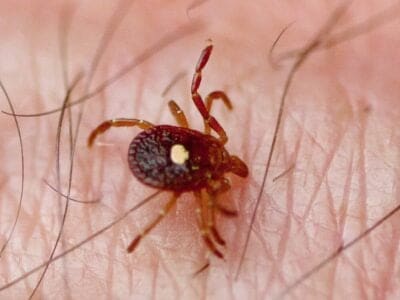
Lone Star Tick
Only females have the ‘lone star’ marking

Macaw
The largest species of parrot in the world!

Maggot
Will only live in wet areas
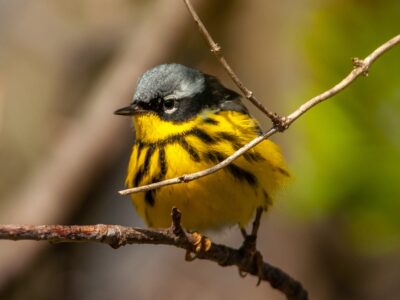
Magnolia Warbler
They line their nests with fungi strands
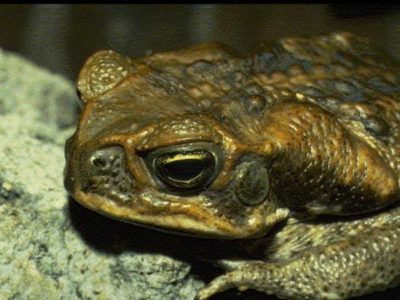
Marine Toad
Produces a toxin used in arrow darts!

Mayfly
There are 2,500 known species worldwide!

Mealybug
They have a symbiotic relationship with ants.

Millipede
Some species have a poisonous bite!

Mockingbird
Mockingbirds are incredible mimics that can learn hundreds of songs!

Mole Cricket
Adult Mole crickets may fly as far as 5 miles during mating season and are active most of the year.
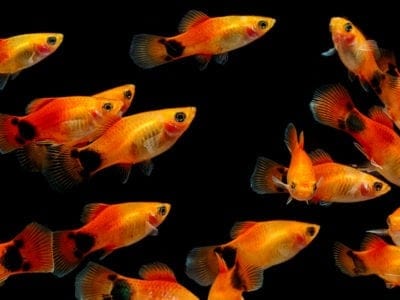
Molly
Known for their calm and peaceful nature!
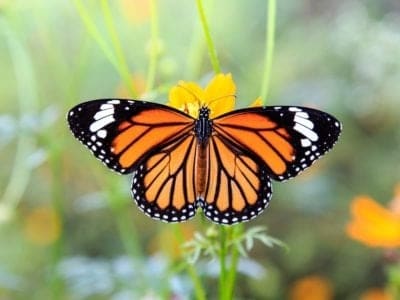
Monarch Butterfly
During migration, Monarch Butterflies may travel 250 or more miles each day.

Mongrel
Has characteristics of two or more breeds!

Monkey
There are around 260 known species!

Moorhen
Feeds on aquatic insects and water-spiders!

Mosquito
Only the female mosquito actually sucks blood

Moth
There are 250,000 different species!
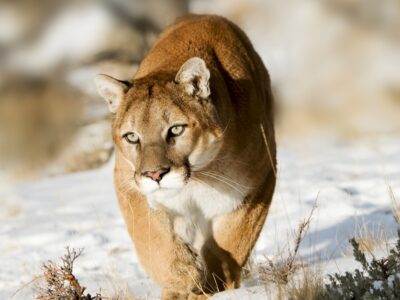
Mountain Lion
Has no real natural predators!
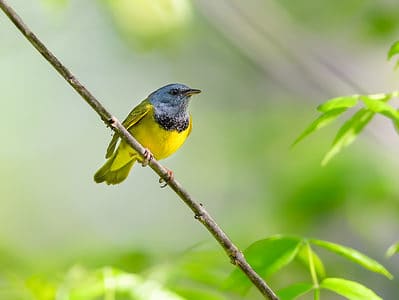
Mourning Warbler
The Mourning Warbler was named for its gray head, which resembles a mourning veil!

Mouse
Found on every continent on Earth!

Mule
The offspring of a horse and donkey parents!

Nematode
Nematodes range in size from 1/10 of an inch to 28 feet long

No See Ums
There are more than 5,000 species.
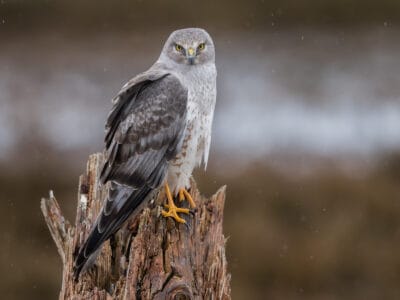
Northern Harrier
They can reach speeds of 25 Mph but prefer to soar low and slow.
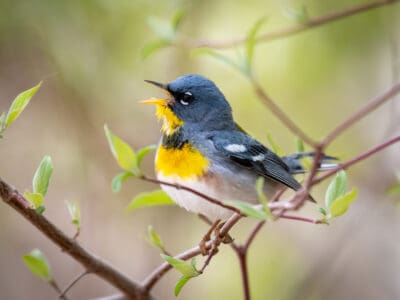
Northern Parula
They live in coffee and citrus plantations during the winter

Northern Potoo
You can find them near golf courses in urban areas
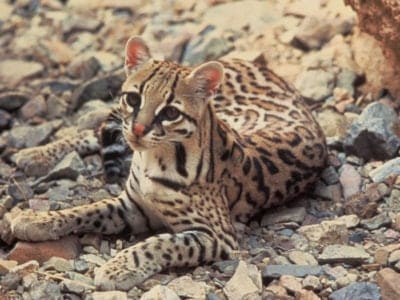
Ocelot
Also known as the Painted Leopard!

Orb Weaver
Females are about four times the size of males

Osprey
They reuse nesting sites for 70 years!

Otter
There are 13 different species worldwide

Owl
The owl can rotate its head some 270 degrees
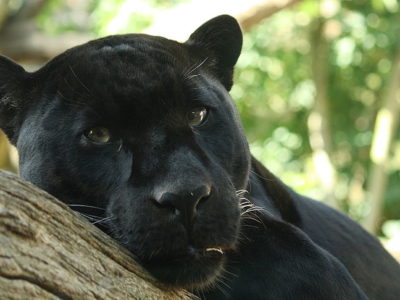
Panther
Prefers to hunt at night than during the day!

Parrot
Can live for up to 100 years!

Pheasant
Females lay between 8 and 12 eggs per clutch!

Pigeon
They can find their way back to their nests from up to 1300 miles away.
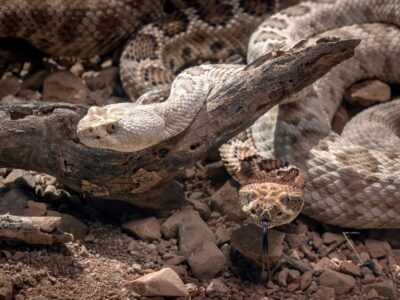
Pit Viper
Pit vipers's fangs fold up into their mouths when they don't need them.
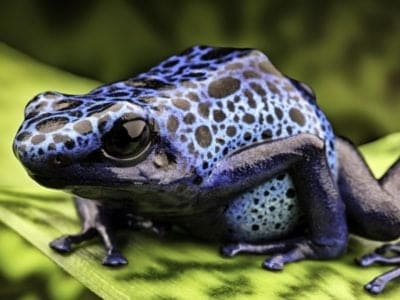
Poison Dart Frog
Inhabits the jungles of Central and South America!

Pompano Fish
They are bottom-feeders

Porcupine
There are 30 different species worldwide!

Praying Mantis
The mantis can turn its head 180 degrees.

Puma
Has longer back legs than front legs!

Quail
Inhabits woodland and forest areas worldwide!
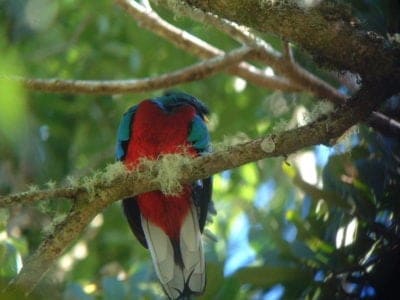
Quetzal
The tail feathers of the male can be 1m long!

Rat
Omnivores that eat anything!

Rattlesnake
Rattlesnakes may have evolved their rattle to warn bison away from them.

River Turtle
Inhabits freshwater habitats around the world!

Rodents
The capybara, the world’s largest rodent, likes to be in and around bodies of water. Because of this, the Catholic Church in South America decided that it was a fish, and people were allowed to eat it during Lent and First Fridays.

Rooster
Will mate with the entire flock!
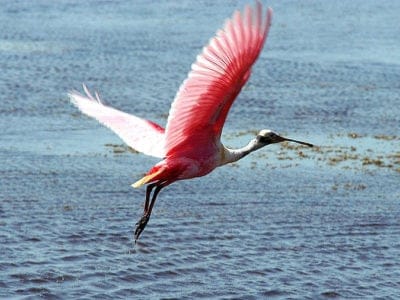
Roseate Spoonbill
The only Spoonbill in the western hemisphere!
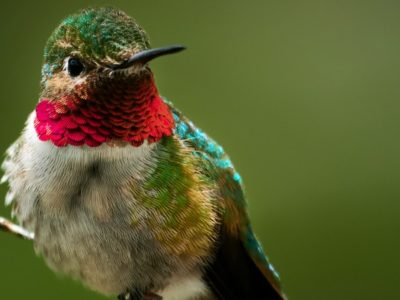
Ruby-Throated Hummingbird
Ruby-throated hummingbirds can beat their wings more than 50 times per second.

Saber-Toothed Tiger
Canines up to 7 inches long!

Sable Ferret
Ferrets were used during the Revolutionary War to keep down the rat population.

Salamander
There are more than 700 different species!

Sand Crab
The sand crab burrows beneath the sand with its tail

Scorpion
There are around 2,000 known species!

Sea Eagle
The sea eagle tends to mate for life with a single partner

Seahorse
Males give birth to up to 1,000 offspring!
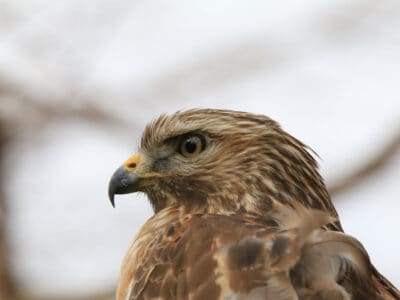
Sharp-Shinned Hawk
In captivity, sharp-shinned hawks can live up to 13 years. However, in the wild, this number is significantly reduced to 3 years!

Shrew
The spinal column of the shrew Scutisorex somereni is so strong and reinforced that it can support the weight of an adult human.

Shrimp
There are 2,000 different species worldwide!

Skink Lizard
Some skinks lay eggs in some habitats while giving birth to skinklets in other habitats.
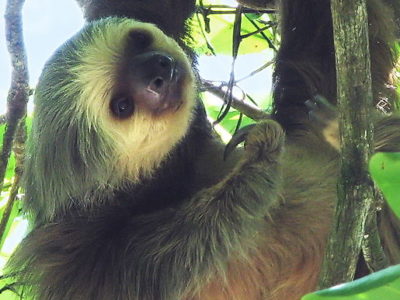
Sloth
It's body temperature is between 30 - 34 degrees!

Slug
They glide around on one foot, which is aided by the slime they produce

Smokybrown Cockroach
Has up to 45 eggs per egg case

Snail
There are nearly 1,000 different species!

Snake
There are around 4,000 known species worldwide

Sparrow
There are 140 different species!

Spider Wasp
They prey on spiders to feed their larvae or they parasitize other spider wasps.

Squirrel
Small rodents found in woodlands worldwide!

Stick Insect
There are more than 3,000 different species!

Swan
Populations have been affected by pollution!

Tarantula Hawk
Tarantula hawks are excellent pollinators, especially for milkweed.

Termite
Their mounds can be up to 9 meters tall!

Thrush
The American robin is called the robin because its red breast reminded European settlers of the robin back in the old country.

Tick
They inject hosts with a chemical that stops them from feeling the pain of the bite

Tiger Beetle
The adult tiger beetle is one of the fastest land insects in the world

Tortoise
Can live until they are more than 150 years old!
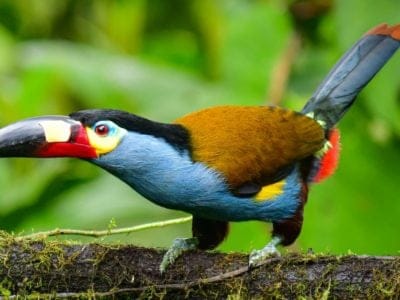
Toucan
There are more than 40 different species!

Tree Cricket
They make music with their wings

Tree Frog
Found in warmer jungles and forests!

Turtles
Some species of aquatic turtles can get up to 70 percent of their oxygen through their butt.
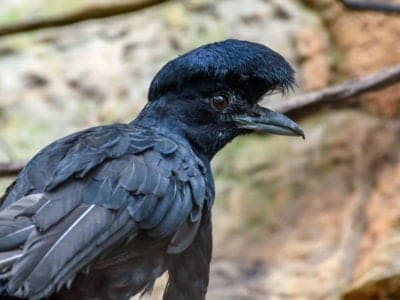
Umbrellabird
Migrates up and down the mountains!

Vampire Bat
Have a heat sensor on the end of their nose!

Vinegaroon
Vinegaroons can spray 19 times before the glands are depleted

Vulture
There are 30 different species worldwide!

Wasp
There are around 75,000 recognised species!

Welsh Black Cattle
Welsh Black Cattle were once used as currency in Wales and referred to as “black gold”.

Whiptail Lizard
Many whiptail species reproduce asexually.
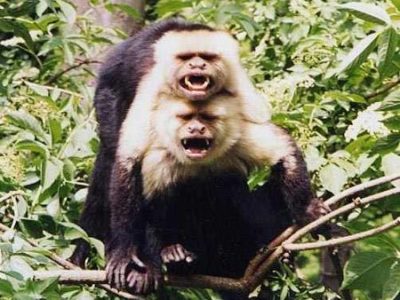
White-Faced Capuchin
One of the world's most intelligent monkeys!

White Ferret / Albino Ferrets
There are two different types of white ferrets!

Wolf Spider
Carnivorous arachnid that hunts its prey.

Woodlouse
This animal can roll up into a ball

Woodpecker
There are 200 different species!

Worm
Doesn’t have eyes.
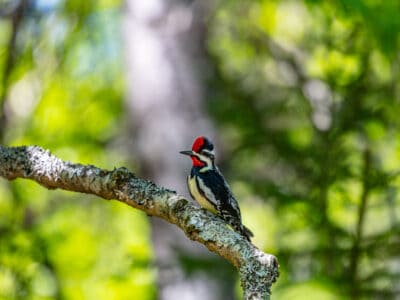
Yellow Bellied Sapsucker
The males are responsible for choosing the nesting tree most of the time. Luckily, cavity nests are often reused for multiple breeding seasons (up to 7 years.)
Jamaican Animals List
- Admiral Butterfly
- Amazon Parrot
- American Eel
- Anole Lizard
- Ant
- Armadillo
- Armyworm
- Barn Owl
- Barn Swallow
- Bat
- Bear
- Bed Bugs
- Bee
- Beetle
- Bird
- Biscuit Beetle
- Black and White Warbler
- Black Widow Spider
- Blue Dragon Sea Slug
- Blue Tang
- Booby
- Brazilian Treehopper
- Brown Dog Tick
- Burrowing Owl
- Butterfly
- Caecilian
- Camel Cricket
- Cat
- Caterpillar
- Catfish
- Cedar Waxwing
- Centipede
- Chestnut-Sided Warbler
- Chicken
- Cockroach
- Codling Moth
- Collared Peccary
- Common Furniture Beetle
- Common House Spider
- Common Yellowthroat
- Cormorant
- Cow
- Crab
- Crab Spider
- Cricket
- Crocodile
- Crocodylomorph
- Crow
- Cuckoo
- Dog
- Dog Tick
- Donkey
- Dragonfly
- Dubia Cockroach
- Duck
- Dung Beetle
- Dwarf Boa
- Earthworm
- Earwig
- Eel
- False Widow Spider
- Fiddler Crab
- Firefly
- Flamingo
- Flea
- Fly
- Flying Squirrel
- Frog
- Fruit Fly
- Gar
- Gecko
- German Cockroach
- Glowworm
- Gnat
- Grasshopper
- Gray Catbird
- Great Blue Heron
- Guppy
- Hamster
- Hare
- Harpy Eagle
- Harris’s Hawk
- Hawk Moth Caterpillar
- Hercules Beetle
- Honey Bee
- Horse
- Horsefly
- Housefly
- Human
- Hummingbird
- Huntsman Spider
- Ibis
- Iguana
- Insects
- Jacana
- Jack Crevalle
- Jamaican Boa
- Jamaican Iguana
- Jumping Spider
- Kentucky Warbler
- Kingfisher
- Ladybug
- Leech
- Lizard
- Lone Star Tick
- Macaw
- Maggot
- Magnolia Warbler
- Marine Toad
- Mayfly
- Mealybug
- Millipede
- Mockingbird
- Mole Cricket
- Molly
- Monarch Butterfly
- Mongrel
- Monkey
- Moorhen
- Mosquito
- Moth
- Mountain Lion
- Mourning Warbler
- Mouse
- Mule
- Nematode
- No See Ums
- Northern Harrier
- Northern Parula
- Northern Potoo
- Ocelot
- Orb Weaver
- Osprey
- Otter
- Owl
- Ox
- Panther
- Parrot
- Pheasant
- Pigeon
- Pit Viper
- Poison Dart Frog
- Pompano Fish
- Porcupine
- Praying Mantis
- Puma
- Quail
- Quetzal
- Rat
- Rattlesnake
- River Turtle
- Rodents
- Rooster
- Roseate Spoonbill
- Ruby-Throated Hummingbird
- Saber-Toothed Tiger
- Sable Ferret
- Salamander
- Sand Crab
- Scorpion
- Sea Eagle
- Seahorse
- Sharp-Shinned Hawk
- Shrew
- Shrimp
- Skink Lizard
- Sloth
- Slug
- Smokybrown Cockroach
- Snail
- Snake
- Sparrow
- Spider Wasp
- Squirrel
- Stick Insect
- Swallowtail Butterfly
- Swan
- Tarantula Hawk
- Termite
- Thrush
- Tick
- Tiger Beetle
- Tortoise
- Toucan
- Tree Cricket
- Tree Frog
- Turkey
- Turtles
- Umbrellabird
- Vampire Bat
- Vinegaroon
- Vulture
- Wasp
- Welsh Black Cattle
- Whiptail Lizard
- White-Faced Capuchin
- White Ferret / Albino Ferrets
- Wolf Spider
- Woodlouse
- Woodpecker
- Worm
- Yellow Bellied Sapsucker
Jamaica FAQs (Frequently Asked Questions)
How many native animals are there in Jamaica?
On record, you’ll find 21 amphibians, 28 species of birds, 27 reptiles, and 500 land snails native to Jamaica. There are also bats, butterflies, insects, and more.
What other dangerous animals are native to Jamacia?
If you’re in the water, stay away from sea urchins. Though not lethal, the sting will puncture the skin. The wound can become infected and painful.
Will I find poisonous snakes in Jamaica?
Surprisingly, of the half dozen common snakes calling Jamaica home, none are venomous.
Where are monkeys in Jamaica?
Considering Jamaica is flush with forests and wildlife, it’s interesting to note there are no wild monkeys. You can find some in the zoo, but none roam free. It’s likely the breed died out as there are bone fragments and fossils that imply simian life on the island.
How dangerous are the sharks?
The vast majority of this species is the nurse shark. These animals are generally harmless to humans. You do want to avoid the native tiger shark.





